1884 Silver Dollar Value: How Much Is It Worth Today?
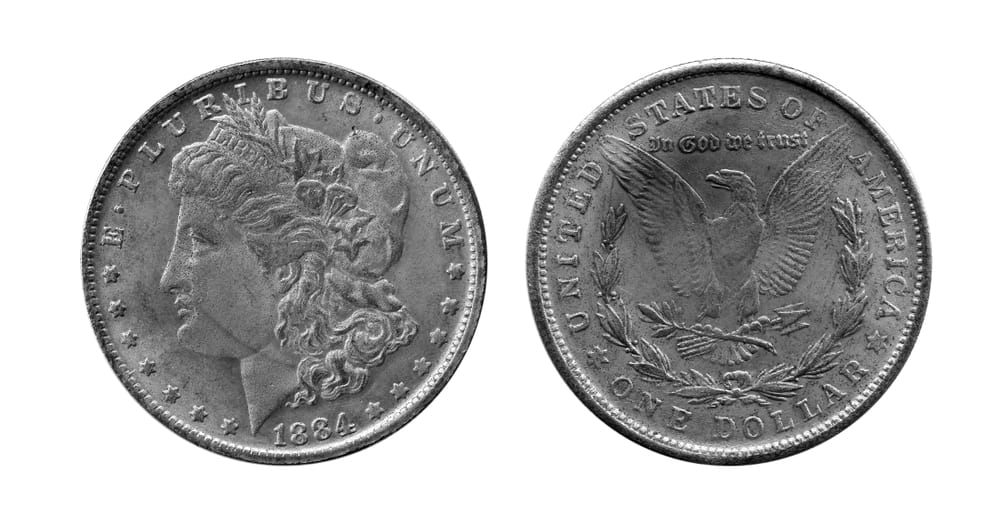
The Morgan dollar coin is one of American history’s most recognizable and desirable collectibles. Not only is it part of the discontinued dollar coin, but its signature Liberty design and high silver composition make it a safe investment in any condition.
The 1884 silver dollar is an exciting year to look out for, as many of these coins have gone on to sell for thousands of dollars at public auctions. If you come across an 1884 silver dollar, have it graded, as it will almost always be worth more than its face value.
This article will go through all the different aspects of the 1884 silver dollar value. We’ll talk you through all the variations of this historical coin and highlight interesting errors you should be aware of.
1884 silver dollar value chart |
||||
| Mint Mark | Good
(G-4) |
Extremely Fine | Uncirculated
(MS-65) |
Uncirculated
(MS-67)
|
| 1884 No Mint Silver Dollar | $42 | $59 | $357 | Up to $66,000 |
| 1884 O Silver Dollar | $42 | $60 | Up to $5,160 | Up to $31,625 |
| 1884 CC Silver Dollar | $130 | $239 | Up to $1,080 | Up to $85,187 |
| 1884 S Silver Dollar | $53 | $141 | Up to $150,000 | Up to $750,000 |
1884 No Mint Silver Dollar
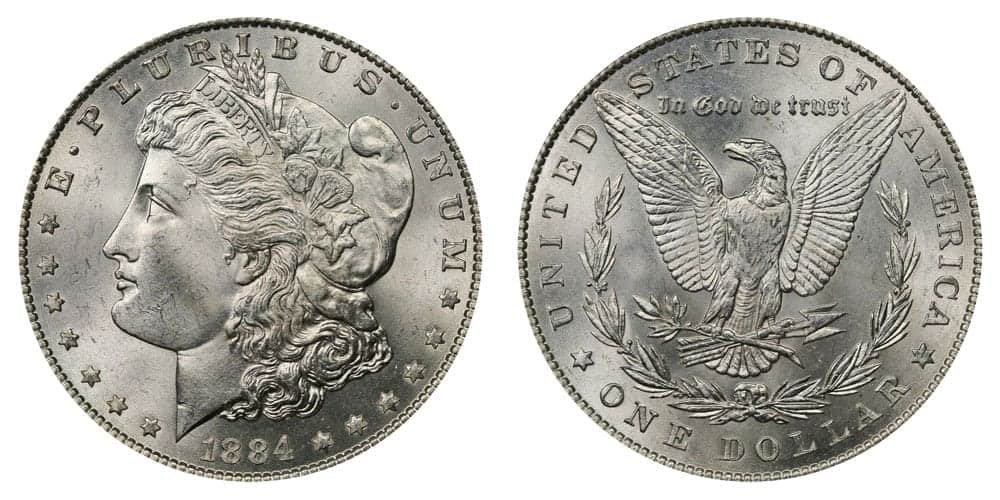
The first variety of 1884 silver dollars we will discuss was made in Philadelphia. These can be easily identified by the absence of a mint mark, a common feature of coins produced here.
Philadelphia produced over 14,070,875 silver dollars in 1884, quickly becoming the most common variant in circulation. This high production number was partly inspired by the Bland-Allison Act, which is 1878, which compelled the US Treasure to invest in making large quantities of silver-based coins.
The 1884 silver dollar bears the signature Morgan dollar design, which started production in 1878. The design came from engraver George T. Morgan, whom the series was subsequently named after.
The coin’s obverse features a profile depiction of Liberty, with the Latin motto ‘e pluribus Unum’ surrounding her, which translates as ‘Out of many, one.’ The woman who modeled for the coin, Anna Willess Williams, became incredibly famous, known as the ‘silver dollar girl’ in the media.
The reverse showcases an eagle with its wings outstretched, clutching arrows, and an olive branch, with the phrase ‘In God We Trust’ above. The eagle proved somewhat awkward during production, mainly because the number of feathers present on the tail quickly wore died out.
As their name suggests, the 1884 silver dollar comprised 90% silver and 10% copper. This high silver content made the dollar coin incredibly expensive to produce but also a valuable investment to melt. It currently has a melt value of $18, meaning even poorly conditioned coins will have a much higher value than their face value.
Also, the high silver made the coin incredibly heavy, especially compared to modern coins. It weighed 26.73 grams and had a large diameter of 38.1mm. This large size made counterfeiting a problem for the US Mint to consider, as people often shaved filings from silver coins to produce replicas.
To combat this, the 1884 silver dollar had reeded edges (ridges), which made shaving the coins incredibly easy to detect. If the coin had a blunt edge, people could easily detect it was tampered with.
Because of their higher production value, the 1884 no mint silver dollar is the most commonly found variation in circulation. And in most cases, coins are of good or acceptable quality and sell for over $50.
That said, the high production and circulation rate means that high-quality coins can be in short supply, and uncirculated coins have been known to sell for hundreds of dollars, as recorded on the auction site PCGS.
The highest recorded sale for an 1884 no mint silver dollar happened in 2022, when an MS68-graded coin sold for $66,000, deemed incredibly rare for this variety. It was said to have a razor-sharp definition and vibrant mint luster on both sides.
1884 O Silver Dollar
The mint in New Orleans produced the second-largest amount of silver dollars in 1884, at 9,730,000. Coins can be identified by a signature ‘O’’ on the silver dollar’s reverse side.
Like other Morgan dollars, these coins had an incredibly high silver content of 90%, making them particularly valuable throughout history for melting. As a result, not many of the 9.7 coins produced here have survived.
The New Orleans mint is steeped in history, helping to add significant value to its coins. The mint began producing coins in 1835 to help boost coin production in America, especially in the southern states. It was also instrumental in limiting the circulation of foreign currency at the time.
The mint stopped temporarily in 1861 because of the ensuing Civil War. After the Reconstruction period, the mint struck coins from 1879 to 1909 before operations stopped entirely. This makes any coins, especially 1884 O silver dollars, highly collectible. After closure, most of the mint’s machinery was transported to Philadelphia, helping boost the productivity of that mint considerably.
The 1884 O silver dollar’s highest recorded sale was $31,625. It was hailed as the finest example of a ‘proof-like’ Morgan dollar, with an amazing cameo and mirrored finish that has become increasingly rare in the series.
1884 CC Silver Dollar
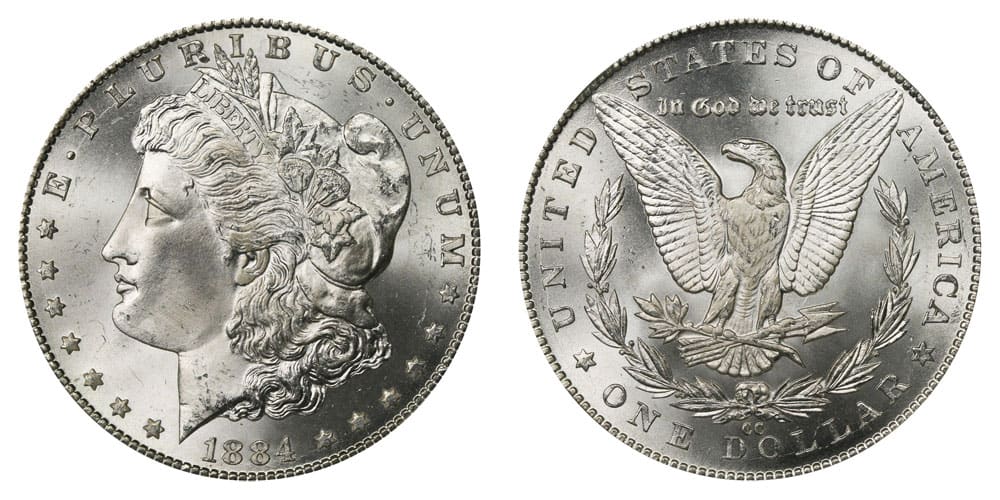
With a record of just 1,136,000, the mint at Carson City produced the fewest silver dollars in 1884. Their unique mint mark ‘CC’ on the coin’s reverse makes them easy to spot.
Like the New Orleans mint, the Carson City mint had a relatively short history. It was developed during the height of the silver boom and was active from 1870 to 1893.
Located in Nevada beside a silver mine, the mint is best known for producing Morgan silver dollars, making the 1884 CC variation especially interesting for series collectors.
Even in low conditions, the 1884 CC silver dollar can fetch at least $130 at auction. That said, there are a surprisingly higher number of mint condition coins on the market today, thanks in part to the ‘GSA Hoard.’
This event was when several million silver dollars from the vaults of the US Treasury Department were sold in the 70s and 80s, with the majority of the sales being coins from Carson City. This influx of high-grade coins diminished the appeal of the coins somewhat.
If coins are pristine, such as MS67+, you can expect thousands of dollars for your coin. The most valuable 1884 CC silver dollar was sold for $85,187 in 2015. It was described on the auction lot as perhaps one of Carson City’s finest Morgan dollars, with a smooth, crisp surface, full strike, and frosted luster.
The Carson City mint closed in 1893. Although a commemorative 2021 Morgan dollar was struck with the mint mark CC, these were not made in the original Carson City mint.
1884 S Silver Dollar
The final variation is from the San Francisco mint, which produced 3,200,000 silver dollar coins in 1884. You can identify these coins by their signature ‘S’ mint mark on the reverse.
Because of its low production number and the tendency to melt these coins for their silver content, 1884 S silver dollars are increasingly rare. Even in Fair or Good condition, they can sell for an impressive $50 to $150 at auction.
That said, the 1884 S silver dollar has been known to sell for unbelievable amounts in high mint condition. And this variety currently holds the record for one of the most expensive auction sales in coin collecting history.
The highest sale on record was set in 2020 when an MS68 coin sold for $750,000. The auction listing called it a ‘wonder coin,’ with razor-sharp details, high luster, and gold iridescence, the likes of which rarely appear in any coin series of any date.
1884 silver dollar Grading
The most common grading system used with Morgan dollars is the Sheldon coin grading system, which categorizes coins across a rating of 70.
Below is an easy guide that explains how you can apply this rating to your 1884 silver dollars:
Rare 1884 Silver Dollar Error List
Like many coins, an error, fault, or slight variation to the norm can transform your 1884 silver dollar into a one-of-a-kind gem. Because of its relatively high production numbers, there are many known errors. They include:
1884 Silver Dollar off-center error
Even though off-centering is a standard coin error, don’t underestimate its ability to transform your coin’s value. This error happens when the stamp and coin are not aligned perfectly. The result can be a skewed picture partially missing from the coin.
Collectors rank this error in percentages, with higher numbers usually valued higher. This 1884 O silver dollar has a 15% off-centering and sold for $19,200 in 2017. It was exceptional because it still had both the date and mint mark present.
1884 silver dollar strike error
A striking error might appear on one or both sides of the coin if a piece of dirt or debris was on the stamp during striking, resulting in a distinctive line or crack.
The value of this error ultimately depends on the fault line’s severity and the coin’s overall condition. For example, this 1884 silver dollar sold for $471 in 2000, showing a striking error underneath Liberty’s chin.
The auction lot says the coin has “above average appeal” and suggests a wire came in between the die and coin during striking, creating this distinct fault line.
1884 silver dollar with clipped coin error
Because of their high-production costs and the fine silver used, it was rare for a coin to enter circulation with these errors. Instead, they would be remelted and restruck.
That said, certain coins have presented at auction with minor clipping errors. Even a tiny clip can increase the uniqueness of a coin. For example, this 1884 no mint silver dollar has the faintest clip error on its rim and is worth an impressive $6,462.
1884 silver dollar collar error
Collars are used in coin production to ensure an equal, even circle. But sometimes, the collars became misshapen or weren’t correctly secured during striking. As such, you might have unequal coins with uneven ridges on their edges.
Collar errors aren’t that high in value, especially compared to other faults. That said, you can expect an 1884 silver dollar with uneven collaring to fetch about $164 at auction.
1884 silver dollar FAQ
Is the 1884 silver dollar rare?
Generally speaking, an 1884 silver dollar is considered quite rare. This is for several reasons, including a long time since production, its high silver composition, and its signature Morgan design.
Despite numerous attempts by the US government to make dollar coins appealing, the public has always resisted, leading to their eventual discontinuation in favor of $1 bills. This novelty adds to their collectibility.
Which 1844 variety is worth the most?
Purely on production numbers, Carson City produced the least number of 1844 silver coins. Additionally, it and the New Orleans mint closed relatively soon after 1884, making coins with their mint marks increasingly rarer.
Where is the mint mark on an 1884 Morgan silver dollar?
The 1884 silver dollar’s mint mark is on the coin’s reverse side, just below the eagle.
What is the 1884 silver dollar made from?
As the name suggests, 1884 silver dollars contain mostly silver (90%) and the remaining 10% as copper. For this reason, people melted these coins down for their high melt value.
What is the highest recorded sale for an 1884 silver dollar?
The highest recorded auction for an 1884 silver dollar is this coin which sold for $750,000. The coin was minted in San Franciso and had a razor-sharp design and unmatched luster.
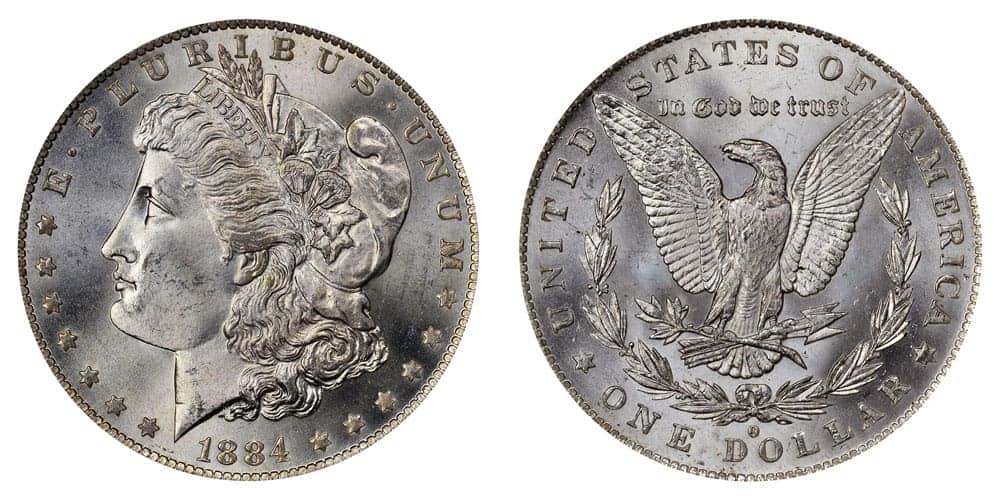
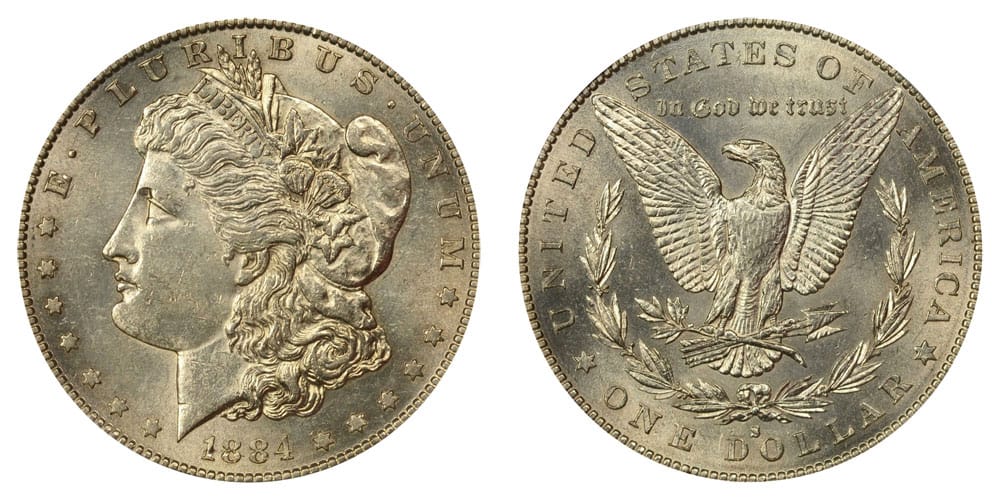

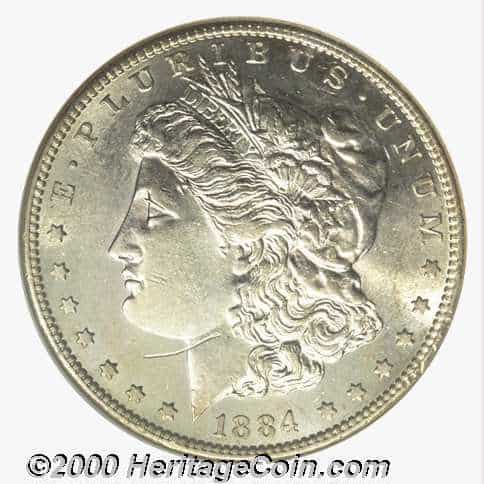
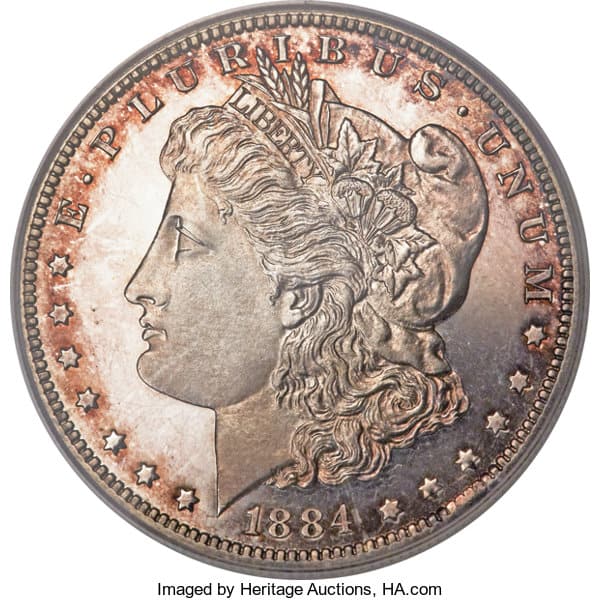
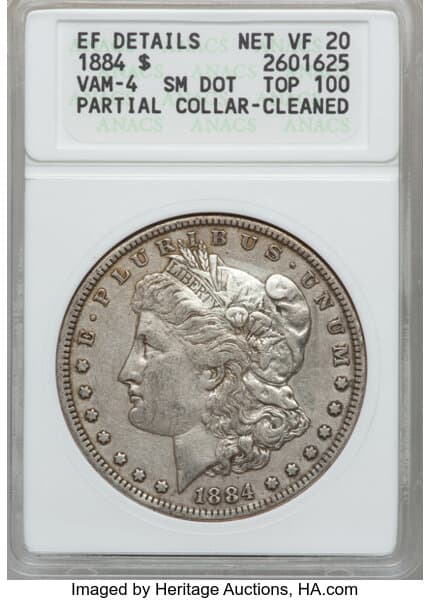
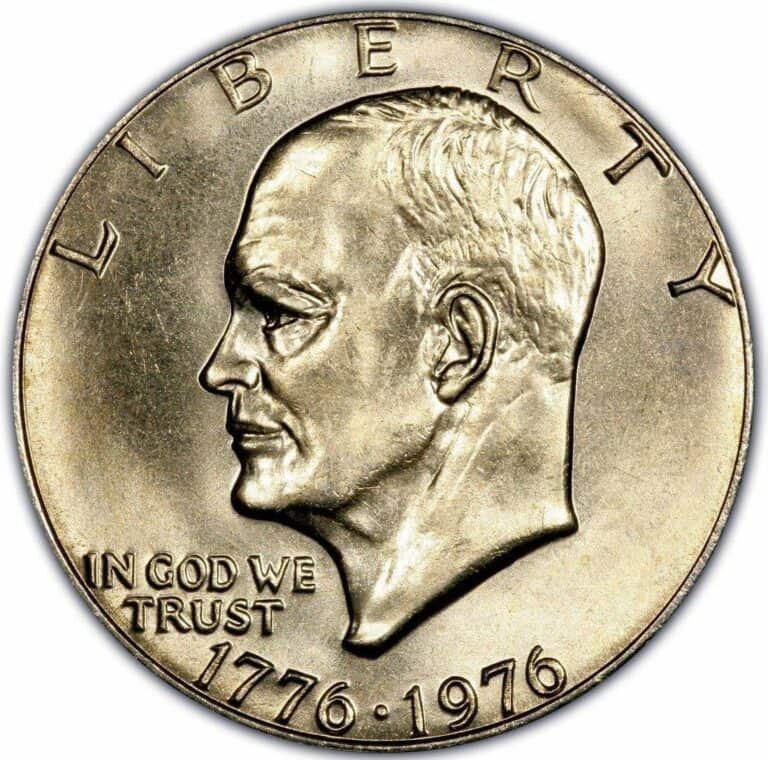
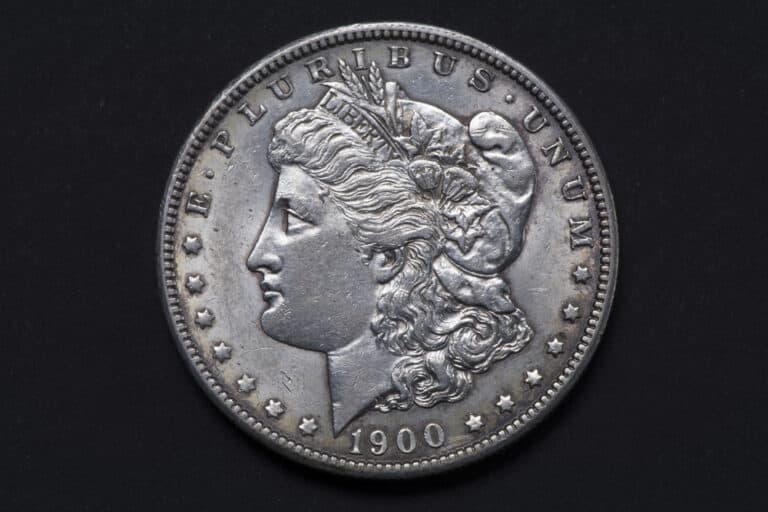
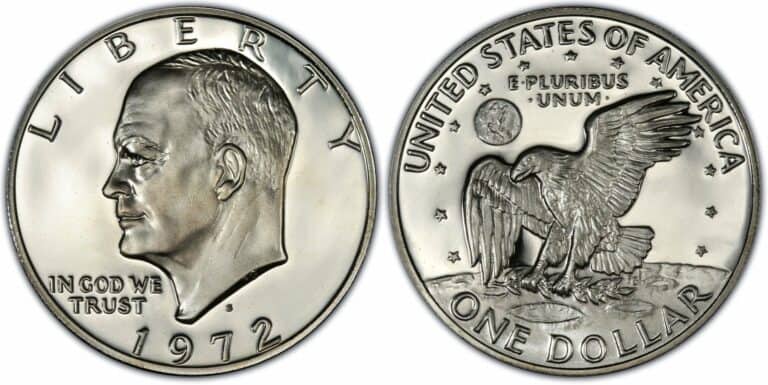
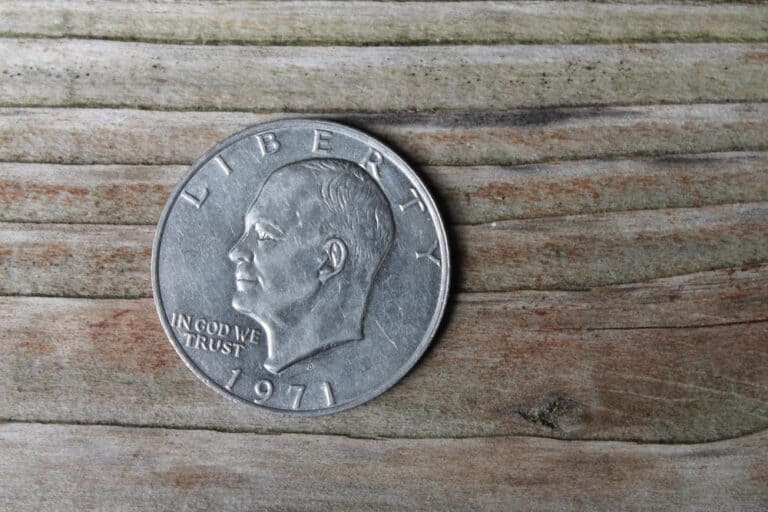
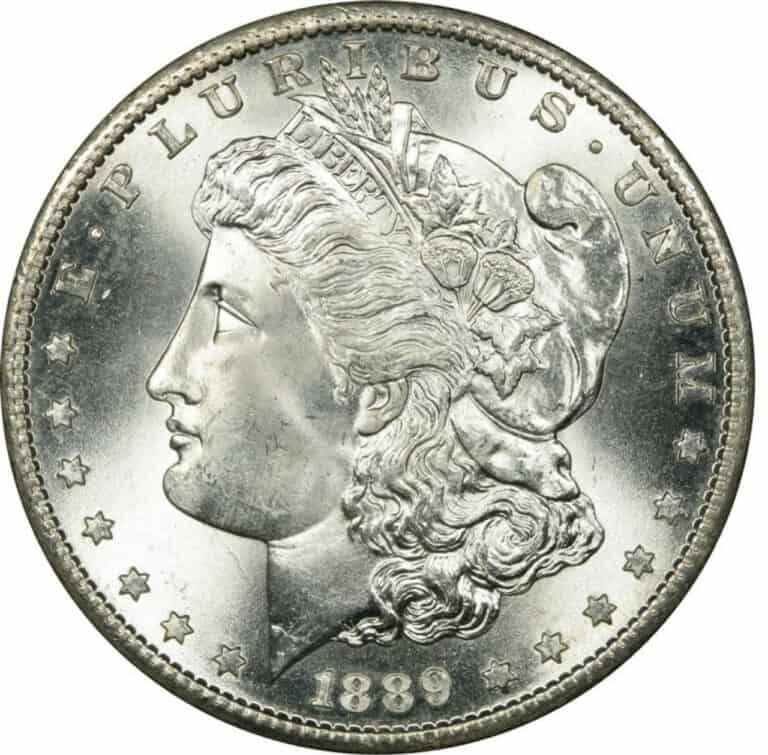
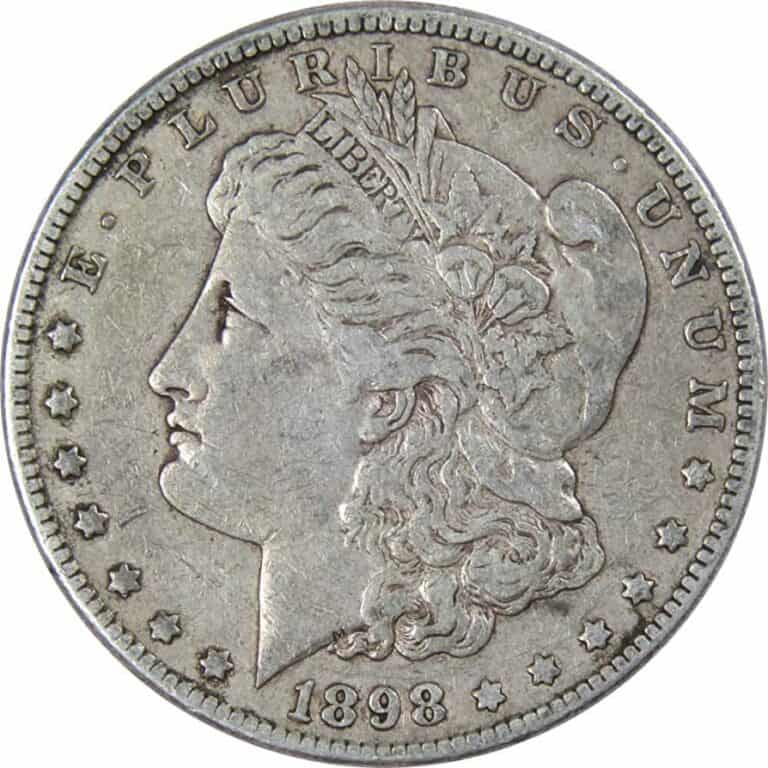
Hello, I have the exact coin 1884 s silver dollar. beautiful condition seems to be uncirculated.